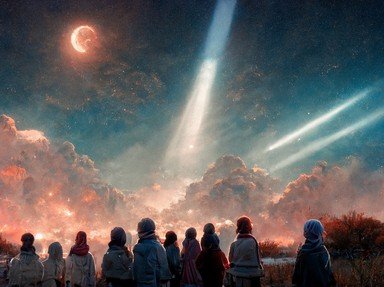Quiz Answer Key and Fun Facts
1. "Alice! A childish story take,
And with a gentle hand
Lay it where Childhood's dreams are twined
In Memory's mystic band,..."
Two of the greatest children's classics of all time owe their existence to a little girl born in 1852 in Oxford, England to Lorina and Henry Liddell. What was her name?
2. "Yet what can one poor voice avail,
Against three tongues together?"
Because of her repeated requests, Alice would be forever remembered as the inspiration for "Alice's Adventures in Wonderland" and "Alice Through The Looking-Glass". What was the real name of the shy and stammering author, Lewis Carroll?
3. "I mark this day with a white stone."
According to Carroll's diary, little Alice Liddell's very first meeting with him occurred on April 25, 1856. Where did this fortuitous occasion take place?
4. "All in the golden afternoon
Full leisurely we glide;
For both our oars, with little skill,
By little arms are plied,..."
So began the preface to Lewis Carroll's "Alice's Adventures in Wonderland", published in 1865. In his diary, Carroll indicated a specific date, their "golden afternoon", when after one of many boat trips, Alice begged him to write down the story of "Alice falling down the rabbit hole" for her. What was this memorable date?
5. "Thus grew the tale of Wonderland:
Thus slowly, one by one,
Its quaint events were hammered out
And now the tale is done,..."
Prior to Lewis Carroll's commercial publication of "Alice's Adventures in Wonderland", he had first written an abbreviated version for Alice Liddell and presented it to her in November, 1864. What was the title of Carroll's now-priceless original version?
6. "...The dream-child moving through a land
Of wonders wild and new,..."
In 1871, Carroll needed inspiration to finish off the sequel to "Alice's Adventures in Wonderland". In a chance conversation with a young lady, he commented on her REFLECTION IN A MIRROR (my capitals). Carroll was later able to complete "Alice Through The Looking-Glass" the same year. Who was this young lady?
7. "In friendly chat with bird or beast,
And half believe it true."
"Alice Through The Looking-Glass" was published in 1871. Significant by its absence was a chapter that Carroll decided to omit, possibly on the recommendation of illustrator Sir John Tenniel. What was the omitted chapter's title?
8. "Long has paled that sunny sky:
Echoes fade and memories die:
Autumn frosts have slain July."
By the time "Alice Through The Looking-Glass" was published in 1871, Carroll's friendship with Alice Liddell was at a crossroads. Carroll's lifelong stammer and shyness around adults predicated that he and nineteen-year-old Alice would grow farther apart. What is unique about the closing verse in "Alice Through the Looking-Glass"?
9. "Still, she haunts me, phantomwise,
Alice moving under skies,
Never seen by waking eyes."
Although Carroll retired from teaching at Oxford University in 1881, he still retained rooms at the College. Sadly, while on a visit to his sister's home in Guildford, Surrey, Carroll died suddenly on January 14, 1898, just short of his 66th birthday. What was the cause of death?
10. "In a Wonderland they lie,
Dreaming as the days go by,
Dreaming as the summers die."
In 1928, 30 years after Carroll's death, Alice put her priceless novel up for auction at Sotheby's. It changed hands a few times until 1948, when it was permanently housed in an institution. Where is its permanent location?
Source: Author
benniebenbenny
This quiz was reviewed by FunTrivia editor
DakotaNorth before going online.
Any errors found in FunTrivia content are routinely corrected through our feedback system.
